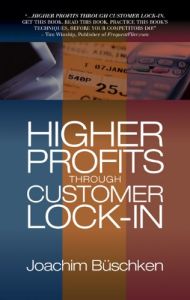Join getAbstract to access the summary!

Join getAbstract to access the summary!
Joachim Büschken
Higher Profits Through Customer Lock-In
Thomson Texere, 2004
What's inside?
Why don`t people dump bad products? 1) Switching is very expensive. 2) Worse yet, it was designed to be that way. Gotcha.
Recommendation
Author Joachim Büschken adeptly presents a different form of pricing strategy based on making it more expensive for customers to switch from your product to a new one, even if your product fails them. This concept, called "customer lock-in," entails charging such high "switching costs" for changing vendors that customers are stuck. It means that consumers who buy deficient software or earn frequent flier miles on a chronically tardy airline are reluctant to change because switching is a big nuisance or too expensive. While your business may not embrace this idea, some hardware (Hewlett-Packard) and software (Microsoft) companies use it to great advantage. To his credit, Büschken has a short section on the ethics of lock-in. He concludes that it is ethically okay given disclosure, though you may want to have a deeper discussion. While the writing can be repetitive and dry, getAbstract.com finds that this is a rare book on a sensitive topic. We recommend it to marketers and product strategists who want to learn more about this little-known, potentially controversial pricing practice. It is also a pretty good eye-opener for consumers; customer lock-in takes caveat emptor to new heights (or depths).
Summary
About the Author
Joachim Büschken, professor of marketing at the Ingolstadt School of Management of Catholic University, Eichstatt, holds a Ph.D. from the University of Munster (Germany), studied at Texas A&M’s graduate school and received a Fulbright scholarship. Since 1990, he has been an associate dean of Catholic University in Germany and Switzerland. He has consulted for international companies and has written several textbooks and articles published in English and German.
















Comment on this summary